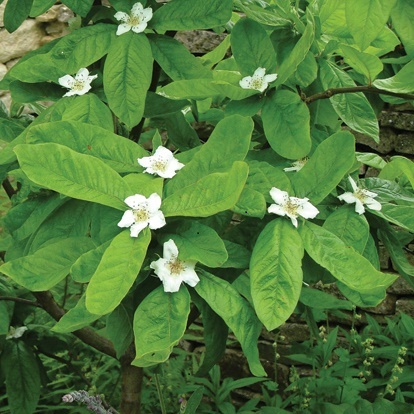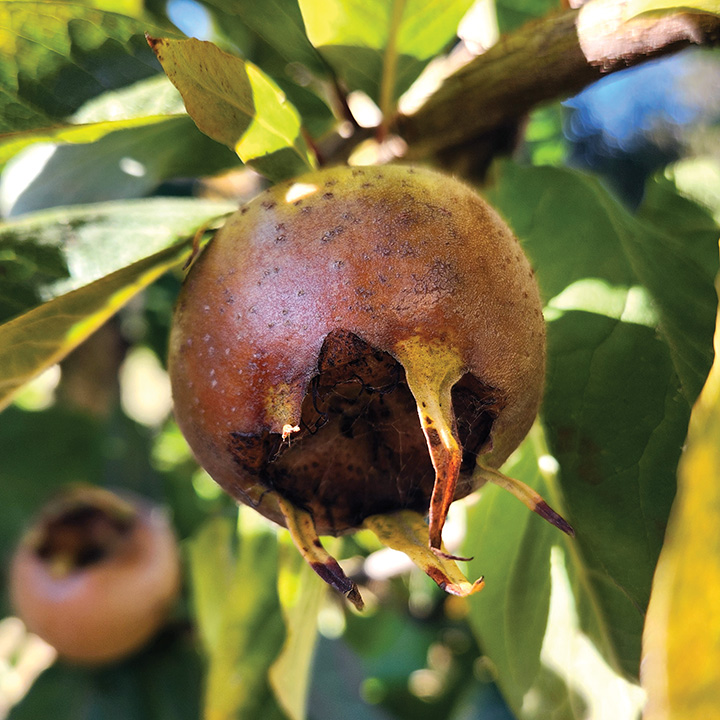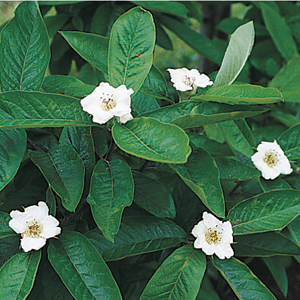No warranty or replacement policies on trees and plants purchased on clearance sale pricing
Due to CFIA regulations we cannot ship plants outside of Canada and cannot ship fruit trees or grape vines to BC.
You are $500.00 away from a 10% discount
Medlar : BREDA GIANT Dwarf (Quince A)
$64.95
Medium sized fruit with a spicy applesauce flavour and texture. This picturesque variety has somewhat droopy branches. A slower grower, it can eventually reach 4.5-6 meters (15-20'). It is originally from Holland.
SELF-FERTILE | ZONE 5 | HARVEST: MID OCT.
3 reviews for Medlar : BREDA GIANT Dwarf (Quince A)
Only logged in customers who have purchased this product may leave a review.
Growing Tips
Medlars Growing Tip
Medlars prefer a somewhat sheltered, well drained site with lots of sunshine. Medlars also have a few unique requirements:
- They should be planted with the graft union several inches
below the soil level to allow the scion to form its own roots. - The fruit is still rock-hard and mouth puckering when picked
late in the fall. They need 2 to 4 weeks to soften up (a process
called bletting) before they are ready to eat, bake or roast, or
make jellies and jams.
Medlar Product Overview
Medlars (Mespilus germanica)
Medlar trees with their sweet, soft and delicious apple-like fruit are very rare and quite unique. Their history goes back to medieval times in England and Europe. In the Middle Ages most walled monastery gardens included a number of these craggy but elegant trees. They can be extremely long-lived. A certain medlar tree in England, planted during the reign of King James I in the early 1600s was reportedly still alive and well quite recently!
A medlar in bloom will rival a rose bush in dignified beauty with its large white blossoms nestled in a whorl of dark green leaves.
1-1.5m (3-5') bareroot tree
Other Medlar
Browse other products in this rootstock and zone.






ALFRED BIHLER (verified owner) –
Francesco Giovannone (verified owner) –
Alex Y. (verified owner) –